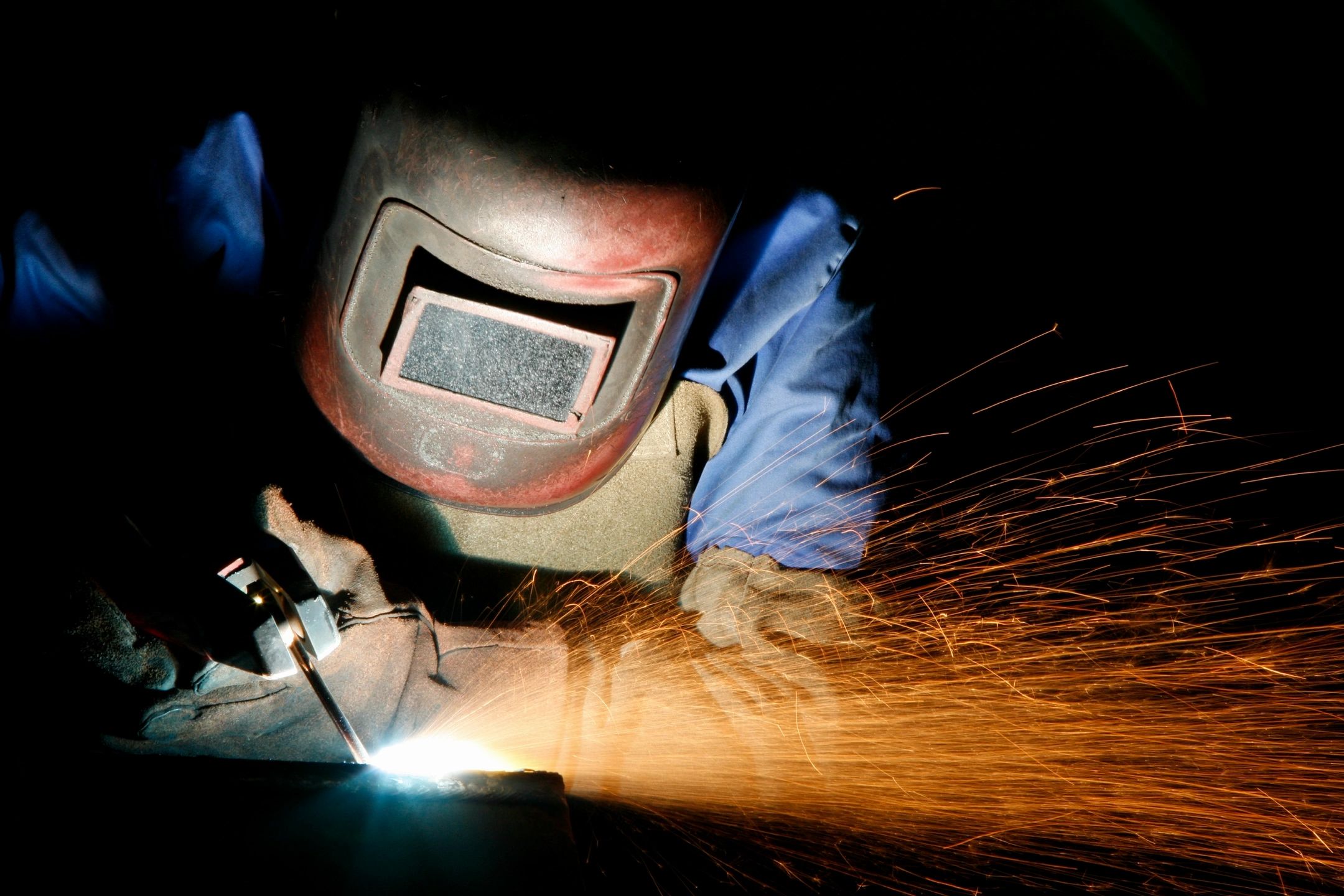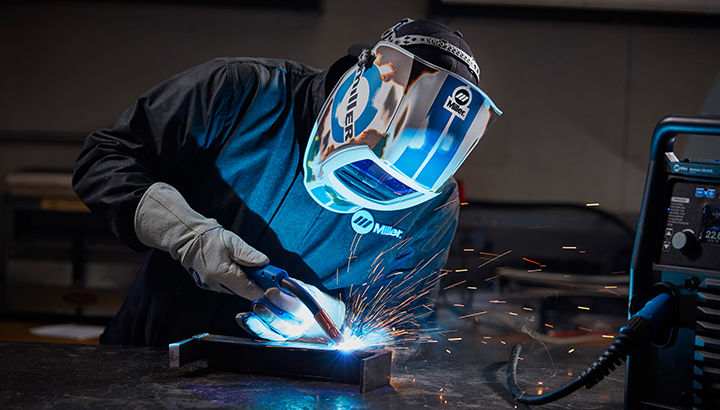Top welding defects Montana Mobile Welding and Repair Belgrade Welding helps eliminate
Wiki Article
All Concerning Welding: Secret Insights Into Techniques and Best Practices for Success
Welding includes a variety of techniques, each suited for specific products and applications. Understanding these methods, such as GMAW, SMAW, and TIG, is vital for attaining optimal outcomes. The ideal tools and safety practices can not be ignored. As prep work and fixing play critical duties in the welding procedure, grasping these aspects can substantially enhance the quality of the final product. What are the essential aspects that ensure a successful weld?Comprehending Various Welding Strategies
Welding methods encompass a range of techniques, each fit to particular applications and materials. Amongst one of the most usual strategies are Gas Steel Arc Welding (GMAW), Shielded Metal Arc Welding (SMAW), and Tungsten Inert Gas Welding (TIG) GMAW, also understood as MIG welding, is preferred for its speed and versatility, making it suitable for thin products. SMAW, or stick welding, is favored for its simpleness and effectiveness in outside atmospheres, specifically with thicker metals. TIG welding uses precision and control, making it suitable for intricate work and non-ferrous metals (Montana Mobile Welding and Repair Welding). Each technique has its special benefits and considerations, enabling welders to select the best method based upon the job's requirements, material type, and preferred outcomes. Recognizing these strategies is vital for effective weldingNecessary Welding Tools and Devices
While different welding methods require details skills, the appropriate devices and tools are similarly important for accomplishing quality outcomes. Necessary welding devices consists of welding makers, which differ relying on the technique-- such as MIG, TIG, or stick welding. Safety gear, consisting of safety helmets, gloves, and aprons, warranties security and comfort during the process. On top of that, components and clamps aid safeguard materials in area, making certain precision in welds. Consumables like welding poles, cable, and securing gas are also important elements that affect the top quality of the weld. Moreover, tools such as cutters and mills promote surface prep work and post-weld finishing, adding to a specialist end result. Spending in top notch tools inevitably boosts the performance and performance of welding jobs.Safety Practices in Welding
Proper safety techniques are vital in the welding industry to safeguard workers from potential hazards. Welders must wear proper personal protective devices (PPE), including headgears with appropriate shading, handwear covers, and flame-resistant garments. Ample air flow is essential to reduce direct exposure to hazardous fumes and gases created throughout the welding procedure. In addition, employees ought to be learnt the correct handling of welding tools to avoid accidents. Fire precaution, such as maintaining combustible materials away from the welding location and having fire extinguishers easily offered, are necessary. Regular inspections of tools and work areas can help recognize prospective dangers before they lead to crashes. By sticking to these security methods, welders can develop a safer working atmosphere and reduce risks linked with their trade.Preparing Materials for Welding
Preparing products for welding is an important step that considerably influences the high quality and integrity of the end product (Montana Mobile Welding and Repair). Correct prep work includes cleaning up the surface areas to get rid of contaminants such as oil, dust, and corrosion, which can jeopardize the weld. Strategies such as grinding, sanding, or utilizing solvents are typically employed to accomplish a tidy surface area. In addition, ensuring that the products mesh well is crucial; spaces can result in weak welds. It's additionally important to take into consideration the alignment and positioning of the elements, as this will affect the ease of welding and the final outcome. Finally, picking the proper filler material and making sure compatibility with the base steels is important for accomplishing strong, long lasting weldsTips for Achieving High-Quality Welds
Accomplishing premium welds requires focus to information and adherence to finest techniques throughout the welding procedure. Proper joint prep work is crucial, ensuring surfaces are cost-free and tidy from impurities. Choosing great post to read the suitable filler material and welding strategy based on the base metals is essential for optimal bonding. Keeping consistent travel rate and angle while welding can protect against issues and promote harmony. Additionally, regulating heat input is crucial; extreme warmth can result in bending and weakened joints. If needed, on a regular basis inspecting the welds throughout the process enables for instant changes. Ultimately, employing appropriate post-weld therapies, such as cleansing and stress relief, can enhance the resilience and integrity of the weld, ultimately making sure an effective result.Fixing Common Welding Issues
Welding often offers challenges that can impact the quality and stability of the last item. Usual issues such as porosity, irregular weld grains, and overheating can develop, each calling for certain troubleshooting methods. Recognizing these issues is important for welders to improve their abilities and accomplish suitable outcomes.Porosity Problems Discussed
Although porosity can frequently be forgotten, it remains a critical concern in welding that can endanger the honesty of a finished item. Porosity refers to the existence of small gas pockets within the weld bead, which can lead and compromise the joint to early failing. This issue usually develops from impurities, moisture, or incorrect securing gas insurance coverage during the welding procedure. To reduce porosity, welders ought to validate that the base products are dry and clean, use suitable shielding gases, and keep regular welding criteria. Frequently evaluating the equipment and setting can also help recognize possible problems before they manifest in the weld. Resolving porosity efficiently is vital for accomplishing solid, resilient welds that meet top quality standards.
Irregular Weld Beans
Irregular weld grains can significantly impact the high quality and strength of an ended up item. Numerous elements add to this issue, including improper traveling speed, incorrect amperage setups, and irregular electrode angles. When the welder relocates too quickly, a bead might appear slim and do not have infiltration, while moving also slowly can trigger excessive build-up. Additionally, making use of the incorrect amperage can cause either damaging or extreme spatter, both of which compromise weld integrity. The welder's technique, such as irregular torch motion, can likewise bring about unequal grain look. To alleviate these troubles, welders must focus on maintaining constant, regulated motions and guaranteeing correct tools setups to achieve uniformity in their welds. Consistency is key to achieving solid and reliable welds.Getting Too Hot and Warping Issues
Excessive heat throughout the welding process can cause significant overheating and warping concerns, affecting the architectural stability of the workpiece. These issues frequently manifest as distortion, which can jeopardize placement and fit-up, making additional assembly testing. Elements contributing to overheating consist of the selection of welding criteria, such as voltage and take a trip rate, as well as the kind of material being bonded. To mitigate these problems, welders should maintain consistent traveling speed and ideal warmth input while monitoring the work surface temperature. Additionally, pre-heating or post-weld warm therapy can assist relieve stresses brought on by fast cooling - Fabrication. Regular evaluation and adherence you can try this out to best techniques are necessary in avoiding getting too hot and making certain the durability and dependability of bonded frameworksOften Asked Inquiries
What Are the Career Opportunities in the Welding Market?
The read more welding sector provides varied occupation opportunities, including settings as welders, examiners, engineers, and teachers. Experts can operate in production, building, aerospace, and automotive fields, taking advantage of solid need and affordable incomes in various duties.Just How Can I Enhance My Welding Speed Without Compromising High Quality?
To enhance welding speed without compromising high quality, one must practice effective methods, maintain equipment, enhance settings, and enhance hand-eye control. Routine training and looking for comments can likewise significantly contribute to achieving faster, high-grade welds.What Qualifications Are Available for Welders?
Various accreditations exist for welders, including those from the American Welding Culture (AWS), the National Center for Building And Construction Education And Learning and Research Study (NCCER), and various industry-specific organizations. These qualifications improve employability and show skill efficiency.How Does Welding Impact the Properties of Metals?
Welding affects the homes of steels by changing their microstructure, which can bring about adjustments in ductility, strength, and solidity. Heat input and cooling prices throughout the process considerably influence these material characteristics.Can I Weld Dissimilar Metals Together?

Report this wiki page